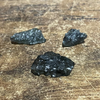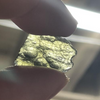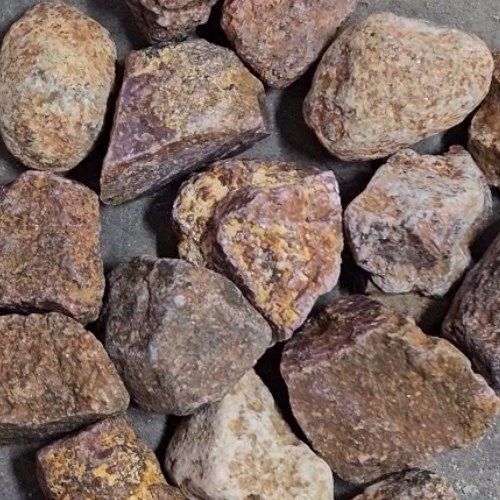Product Description
Country of origin: Czech Republic.
Mineral Information:
Moldavite is a unique and rare form of tektite, which is a type of natural glass formed by the intense heat and pressure generated during meteorite impacts. It is believed to have been created around 15 million years ago when a meteorite collided with the Earth's surface in what is now the southern Germany/Czech Republic region. The impact produced a tremendous amount of energy, melting the surrounding rock and propelling molten material into the air. As this material cooled and solidified while falling back to the ground, moldavite was formed.
Moldavite is known for its distinct green color, ranging from pale green to olive or forest green. It often has a textured surface with unique patterns and features characteristic of its rapid solidification during the meteorite impact. Its appearance can be described as rough or pitted, and it may have natural grooves or indentations.
Metaphysical Meaning:
Moldavite is believed to catalyze profound changes and spiritual evolution. It is said to accelerate personal transformation, helping individuals release old patterns, embrace new possibilities, and align with their higher purpose. Moldavite is often used in meditation and energy work to facilitate spiritual growth and expansion of consciousness.
Due to its extraterrestrial origin, moldavite is associated with cosmic and celestial energies. It is believed to enhance spiritual connections, open channels of communication with higher realms, and facilitate contact with spirit guides, angels, and other beings of light. Moldavite is often regarded as a bridge between Earth and the stars.
Mineral Care:
Moldavite, despite its significant metaphysical properties and uniqueness, is considered a relatively fragile gemstone. Its fragility is primarily due to its composition and the way it was formed.
Moldavite is a type of natural glass that was created by the intense heat and pressure of a meteorite impact millions of years ago. As a result of its rapid solidification, moldavite has a somewhat brittle and delicate structure. It is more prone to fracturing or chipping compared to harder gemstones.
The texture of moldavite can vary, with some specimens being rough and pitted while others have a smoother surface. The rough texture, combined with the presence of natural grooves and indentations, makes moldavite susceptible to damage if handled improperly or subjected to excessive force or pressure.
Additionally, moldavite is not as hard as some other gemstones commonly used in jewelry, such as diamonds or sapphires. It has a hardness of around 5.5 on the Mohs scale, which means it can be scratched or abraded more easily. Therefore, it's important to handle moldavite with care and avoid exposing it to abrasive materials or rough surfaces that may cause scratches or other forms of damage.
When wearing moldavite as jewelry, it's recommended to be mindful of potential impacts or collisions that could cause the stone to chip or break. It's advisable to remove moldavite jewelry before engaging in physical activities, sports, or situations where the stone may come into contact with hard surfaces or experience excessive pressure.
Storing moldavite properly is also crucial for its preservation. It's best to store moldavite separately from other gemstones or jewelry to prevent accidental scratching or damage. Using a soft pouch or wrapping the moldavite in a cloth or tissue can help protect it from potential impacts or contact with abrasive surfaces.
Despite its fragility, moldavite remains highly valued and cherished by many individuals due to its metaphysical properties and unique origin. With proper handling, care, and storage, the fragility of moldavite can be minimized, allowing its beauty and energy to be enjoyed for years to come.
Disclaimer:
No information here is intended to diagnose, treat or cure ailments or afflictions of any kind. One should always consult a medical professional if a serious issue presents itself.













